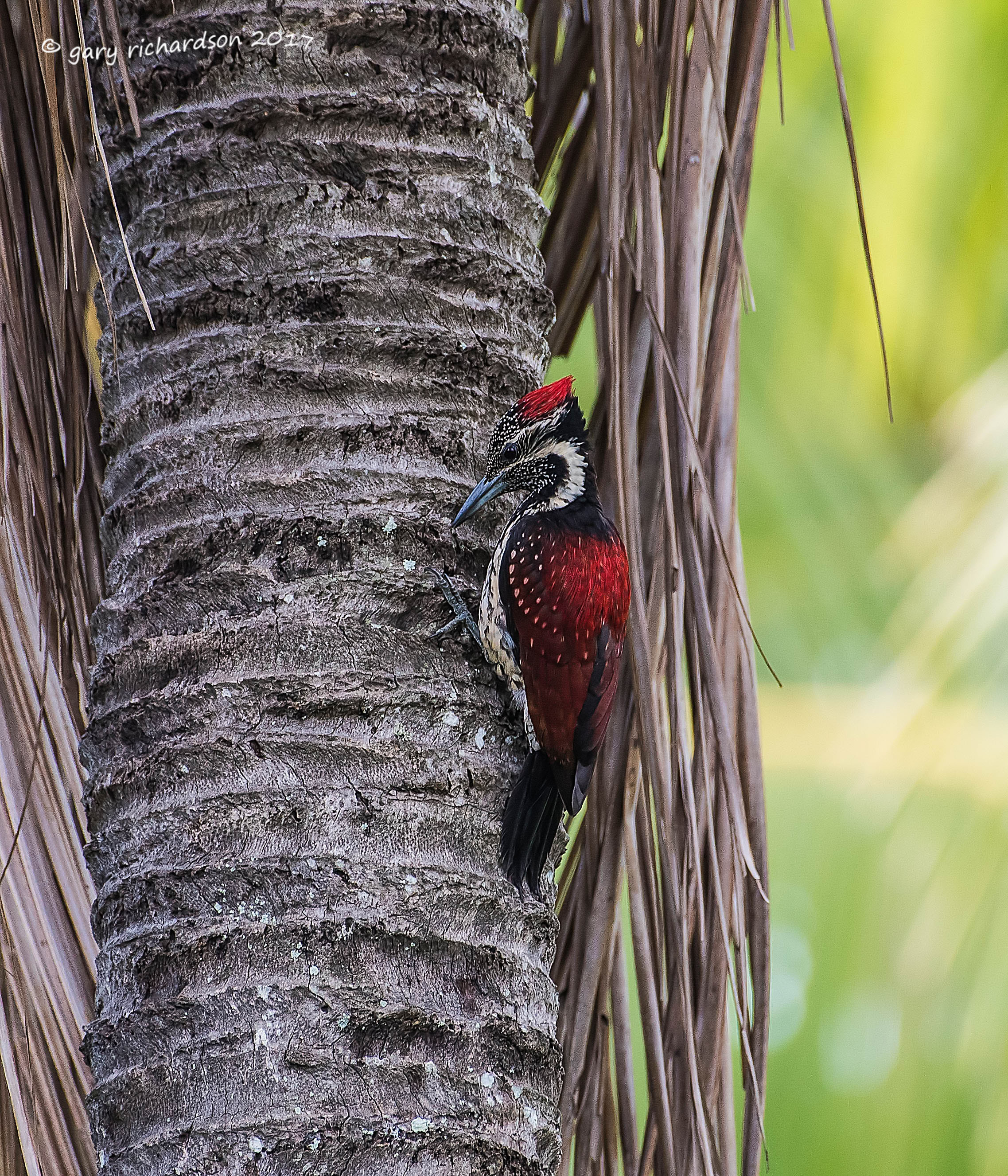

The rump is black and not red as in the Greater Flameback. It has a typical woodpecker shape, and the golden yellow wing coverts are distinctive. The fledging period is 3 weeks.The Black-rumped Flameback is a large species at 26–29 cm in length. Both parents also feed chicks, by regurgitation. Display is by crest-raising done by male, which also observed to feed insects to female. The nest-hole is excavated by both sexes in tree with soft or hard wood or in palm. It breaks into leaf-nests of wasps also descends to the ground to feed at ant nests.īreeding habits: They breed in Mar–Apr in India also in Jul–Aug and in Dec–Sept in Sri Lanka. It stays in pairs and with mixed-species flocks. It forages at all levels in trees clings to underside of horizontal branches, moves backwards occasionally. It is found in lowlands to 1700 m in India.įood habits: It eats ants including larvae and pupae of the fierce red ant, Spiders, caterpillars, weevils and other beetles, fruits and nectar.

Habitat: It is found in all types of moist to dry woodland, mostly deciduous open woodland and light forest, groves around villages, old wooded gardens, tree plantations along roads and canals, open country with trees. The juvenile is duller than adult, black areas in adult are browner, underparts greyer and more obscurely marked, male with narrower red tips and sometimes white spots on crown, female with few or no crown spots. The female has black forehead and forecrown with small white spots. It has a longish bill almost pointed, culmen curved, fairly narrow across nostrils, blackish.
#Black rumped flameback skin
The iris is red-brown to crimson and orbital skin is green to grey. The uppertail is black white to buffish-white below, feathers are broadly edged and tipped black on breast, more narrowly on lower underparts, more bar-like on belly and undertail-coverts underwing is brown, coverts white with black barring in worn plumage, forehead and crown are mostly black, often olive feather bases visible on back. The flight-feathers are brownish-black, outer webs of tertials and secondaries are golden-olive, primaries and inner webs of secondaries and tertials are with well-spaced white spots.

The wing-coverts are golden-olive, outer medians and most of lesser are black with white subterminal spots, inner greater coverts often with white central streak. The chin and throat are black, broadly streaked white hindneck and upper mantle are black lower mantle, scapulars and upper back are golden-yellow, lower back to uppertail-coverts are black. of 86–133 g. The male of nominate race has black forehead and crown with red feather tips, red crest white supercilium, white-streaked black band from eye through ear-coverts, white cheekband meeting supercilium at rear, continuing down side of neck to side of upper breast. Vernacular Names: Sind: Drakhan, Sona kaktola, Pun: Sunahiri kathphora, M.P: Khidree, Ass: Barhoitoka, Te: Vadrangi pitta, Guj: Soneri lakkad-khod, Mar: Chota Sonpathi sutar, Ta: Manu potuku, Kan: Suvarna kutuka, Sinh: Pita rang kerellaĭistribution in India: Resident of Himalayas and hills of India.ĭescription: Size of 26–29 cm wt. Dinopium : Greek word deinos –mighty, huge opos –appearance.Black-rumped Woodpecker Dinopium benghalense


 0 kommentar(er)
0 kommentar(er)
